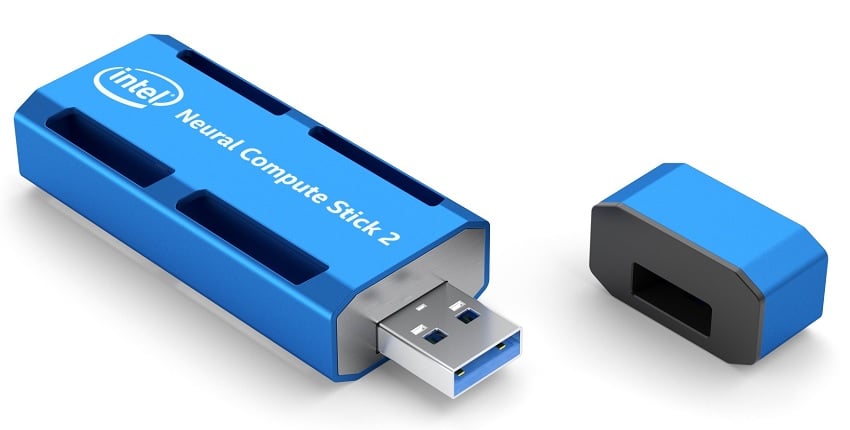Intel hosted its first artificial intelligence (AI) developer conference in Beijing on Nov. 14 and 15. The company kicked off the event with the introduction of the Intel Neural Compute Stick 2 (Intel NCS2); designed to build smarter AI algorithms and for prototyping computer vision at the network edge. The NCS2 has the form factor of a standard USB thumb drive and is every bit as plug and play as the form factor suggests. It is even expected to scale performance linearly with additional NCS2s.

Only a little over a year since the first generation was released and the new version is already boasting some significant improvements. The tiny looking stick includes a beefy Intel Movidius Myriad X Vision Processing Unit (VPU). Intel reports that the NCS2 with asynchronous plug-in enabled for two neural compute engines can process 8 times as many images per second as the previous generation. The new stick is also supported on a broader range of operating systems than its predecessor. Ubuntu 16.04.3 LTS (64 bit), CentOS 7.4 (64 bit), and Windows 10 (64 bit) can all host Intel NCS2. Like its predecessor, the NCS2 is designed to be used with the OpenVINO toolkit which currently supports TensorFlow, Caffe, & MXNet.
The Intel NCS 2 enables deep neural network testing, tuning, and prototyping, so developers can go from prototyping into production leveraging a range of Intel vision accelerator form factors in real-world applications. The Intel NCS2 provides a portable and dedicated hardware neural network inference accelerator. The recommended deployment model is to train a model, run a model optimizer and then input the resulting intermediate representation into the inference engine which can execute the model on the NCS2. Once programmed, the unit is largely self-contained and can be used to provide AI and computer vision applications to a wide variety of unconnected or edge IoT devices such as a smart camera, a drone, or an industrial robot.
Availability
Immediately




 Amazon
Amazon